Domestic brands rapidly raising their game
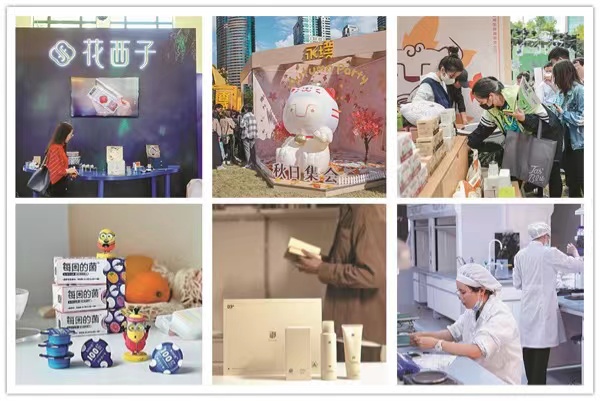
Clockwise from top: Products manufactured in China that have made their mark on the domestic market include those from cosmetic brand Florasis, Yongpu Coffee (top center and right), cosmetic brands XDG and Yu Brand, and health company Bio-Everyday. YI BAI/FOR CHINA DAILY
Product ranges feature elements inspired by traditional Chinese culture
Facing fierce competition in the booming domestic market, newly emerged Chinese brands are keen to drive their transformation by strengthening efforts to meet consumer demand and develop their goods.
In the past decade, products made in China have made their mark in the domestic market and are no longer viewed as being cheap or inferior to foreign brands.
Florasis, a Chinese cosmetics company that has gained popularity among Chinese and overseas consumers in the past five years, is a good example of the makeover that has taken place among Chinese brands.
The company was launched in 2017 in Hangzhou, capital of Zhejiang province, with the aim of reviving traditional Chinese aesthetics and cultural practices. It has since launched a series of signature products, including its etched lipsticks and loose powder containing floral infusions and Chinese herbs.
Meng Huo, vice-president of Florasis, said, "The company targets female Asian consumers with a variety of cosmetics to suit their skin, match their preferences with medium- and high-end goods, and catch their attention with elements inspired by traditional Chinese culture."
In 2020, Florasis launched a set of lipsticks to celebrate Chinese Valentine's Day. The lipsticks, designed in the shape of a lovelock-a symbol of enduring love throughout Chinese history-feature the romantic story of Zhang Bi, an official in the Western Han Dynasty (206 BC-AD 24) who drew eyebrows for his wife and designs on her lips that symbolized China.
Today, members of the new generation of consumers want items that reflect their culture, rather than the foreign heritage and exclusivity that have been so popular in the past. Such demand has resulted in the emergence of the guochao trend-the rise of domestic marques that include Chinese cultural elements in their design or branding.
Meng said, "We want to create a brand that embraces the balance of art, nature and science through our traditional recipes-infusing them in modern formulations using the latest research and development technologies."
Florasis keeps in direct touch with consumers through its livestreaming room and other online platforms, not only to sell products, but to learn the type of products that consumers are looking for. The company's Florasis GEM Program works in conjunction with 200,000 consumers, who help choose the right items to market.
"It usually takes about 21 months to complete the research and development of a single item, which has to pass tests among at least 1,000 product testers before it can be put on the market," Meng said.
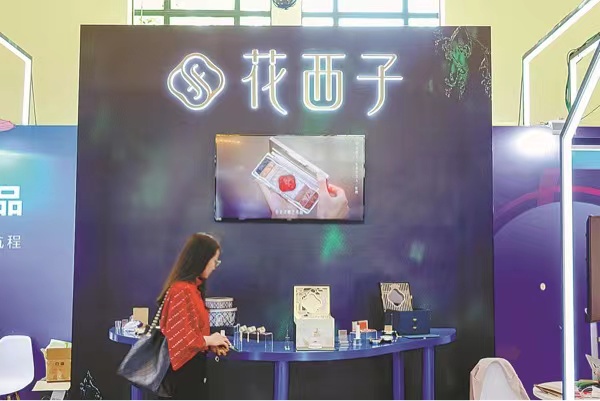
Cosmetic brand Florasis.
Florasis' total transactions reached more than 100 million yuan ($14.79 million) just one year after the opening of its Tmall flagship store in August 2017. Last year, the brand's gross merchandise volume rose to 5.4 billion yuan, up from 3.3 billion yuan in 2020.
After experiencing rapid growth, Florasis' main goal now is to develop the quality of its existing products through in-depth research, instead of promoting a range of new items.
In March, Florasis launched China's first CMF (color, material and finish) laboratory in the cosmetics industry to focus on researching the use of sustainable materials, the relationship between female skin characteristics and makeup color, as well as color trends in Chinese fashion.
In 2019, Florasis began planning its overseas market due to increased demand from consumers living abroad for products that feature Chinese culture. The brand entered the Japanese market in March last year, and two months later, it launched its global website.
In January, Florasis released part of a makeup series that features the 24 solar terms on the traditional Chinese calendar. The series highlights Chinese makeup characteristics such as thin and long eyebrows, under-eye makeup and cherry lips, integrating the different solar terms and floral characteristics into the makeup by combining the shape and color of flowers.
"Our growing popularity overseas has given us the confidence to continue our research and development of products that feature unique Chinese culture in their design and raw materials," Meng said.

Cosmetic brand XDG.
Life experiences
To cash in on the guochao trend, numerous Chinese brands are entering the market to meet the increased demand.
The number of Chinese brands on Douyin, the popular streaming platform, rose by 508 percent in the 11 months from April last year to March, with domestic brands comprising 92 percent of the top-sellers.
On the Xiaohongshu lifestyle platform, where users also share life experiences, as of the end of last year, the number of domestic brands exceeded 78,000. Users have searched for such brands more than 1.2 billion times.
Wang Yajuan, chief marketing officer at Xiaohongshu, said, "Newly emerging domestic brands on our platform have produced a variety of high-quality goods, customized and experiential consumption services to meet increased demand from young people with strong personalities and distinct aesthetic tastes."
It is important for new brands to launch products that are readily accepted and welcomed by consumers, Wang added.
In 2019, Alibaba launched the New Chinese Products Program, helping the annual sales of each of 134 domestic brands exceeded 1 billion yuan on the Tmall e-commerce platform.
In April 2020, Alibaba announced the New Chinese Products Plan 2020 by launching upgraded digital channels for domestic brands in fields such as store livestreaming, cross-border fashion shows, offline exhibitions, and new product research and development. The aim was to add three Chinese brands to each consumer's shopping cart.
As a beneficiary of the guochao trend, Liu Mengzhong, co-founder of the XDG beauty company, believes that its products designed specifically to treat oily skin are a must-buy for the younger generation.
Liu and two other co-founders launched XDG in 2019, introducing its first set of products a year later, when a large number of Chinese beauty brands appeared on the market.
"Although there were competitors in the beauty sector when we started our business, many of them didn't have specific, high-quality and effective products for targeted customers, which became the main focus of our work," Liu said.
XDG, which continues to focus on offering simple, effective and reasonably priced products for young people with oily skin, has set up a laboratory for research and development of products that have a simple formula but a large proportion of scientific ingredients.
It has 17 products on the market, including two patented items to treat oily skin and acne. The company aims to increase its annual revenue from 120 million yuan last year to 360 million yuan next year by providing a better service and upgrading its products.
Liu, who next year plans to sell products in physical stores exclusively to treat oily skin, said, "In addition to our applications to join online platforms such as Xiaohongshu, Douyin and Taobao to attract more consumers, our skin care specialists offer one-on-one services, including advice on how to select and use products to the best effect."
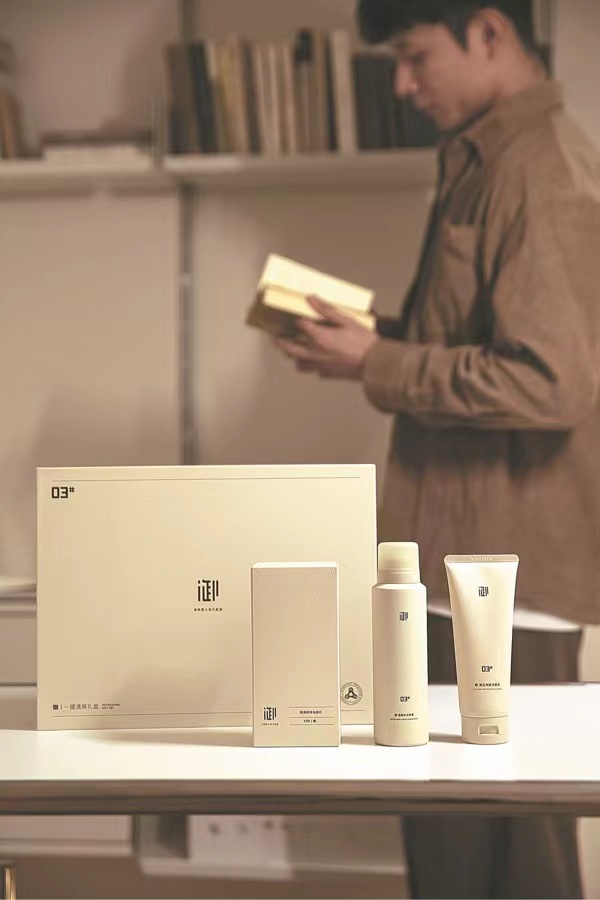
Cosmetic brand Yu Brand.
Rapid growth
Chinese brands achieved rapid growth in 2020, according to the 2021 Chinese Brand Consumption Trend Report released by the JD Research Institute for Consumption and Industrial Development in May last year. These brands' transaction volume rose by 6 percent year-on-year, there were 5 percent more Chinese brands in 2020 than in 2019, while the number of consumers rose by 18 percent year-on-year, according to the report.
Domestic consumers consider five factors-identity, belonging, value, tradition, and security-when buying Chinese brands, the report said.
Wang, from Xiaohongshu, said, "Young people decide to buy a branded product as a form of self-expression, so they are fond of sharing their feelings and experiences on our platform after making a purchase."
Yu Brand, which specializes in men's skin care products, is among those seeking to stand out among the fierce competition.
Targeting young and middle-aged men in first-tier cities, Yu Brand was founded to help such consumers with skin problems caused by stress from their studies or work.
Wang Jianjiao, the company's brand director, said: "Unlike female consumers, who have been targeted by most beauty brands, males seem to have been ignored, even though they have certain demands for skin care products. Therefore, this is a good chance for us to explore potential market possibilities."
Many male consumers need advice on what to buy, how to choose products, how to use them, and how to maintain a healthy skin, Wang said, adding that most important, they need simple but direct solutions to solve their skin care problems.
After monitoring more than 70,000 young men's skin conditions for two years, Yu Brand launched its own set of professional and scientific solutions for young urban males with skin problems caused by daily stress.
Wang said the main aim of the products is to help release stress, which is the chief cause of young men's skin problems such as pimples and blackheads as a result of staying up late to work or study.
"It is essential for newly launched Chinese brands to remain focused on a small group of targeted consumers with a clear goal by providing more effective and simplified products," Wang said.
According to the 2022 Domestic Goods Market Development Report released by the Chinese Academy of Social Sciences and Douyin, from April last year to March, 71 domestic brands made the top 20 in terms of sales revenue in four key industries.
Liu Sijia, a beauty blogger nicknamed Sister Cola, said: "The beauty industry has entered the fast lane, assisted by rising confidence in Chinese brands. However, many new brands initially rely too heavily on marketing, and later struggle. Finding ways to meet increasing demand with better products is a key factor that tests whether brands survive or disappear."

Yongpu Coffee.
In 2019, the market share of Chinese brands on Alibaba's retail platform reached 72 percent, according to the 2020 China Consumer Brand Development Report released by AliResearch. The annual growth rate for pharmaceutical health products reached 38.5 percent, beauty and personal care products saw 36.7 percent growth, while the food industry witnessed annual expansion of 31.5 percent.
With people buying beauty and personal care products to look good, and also food, drinks and healthcare products to enjoy life, Yongpu Coffee introduced its instant brand.
Hou Yongpu, the founder of Yongpu Coffee, which has updated its products continuously since being launched in 2014, said, "What customers want, and how they enjoy products, have always been our top priority, so we keep evolving to meet demand from consumers who give us the inspiration, encouragement and impetus to move forward."
Yongpu Coffee initially only sold drip-bag coffee, but to meet rising demand, it introduced high-quality instant coffee. It introduced coffee capsules on the Chinese market in 2017.
Hou said, "We've mastered the most difficult part-applying high technology to produce instant coffee without any preservatives and stabilizers that is storable at room temperature. We are now more determined to expand the local coffee market with better-quality products."
Yongpu Coffee is not the only Chinese brand to adopt high technology to become an innovative pioneer. Healthcare company Bio-Everyday is also attempting to achieve its goals with the use of scientific technology.
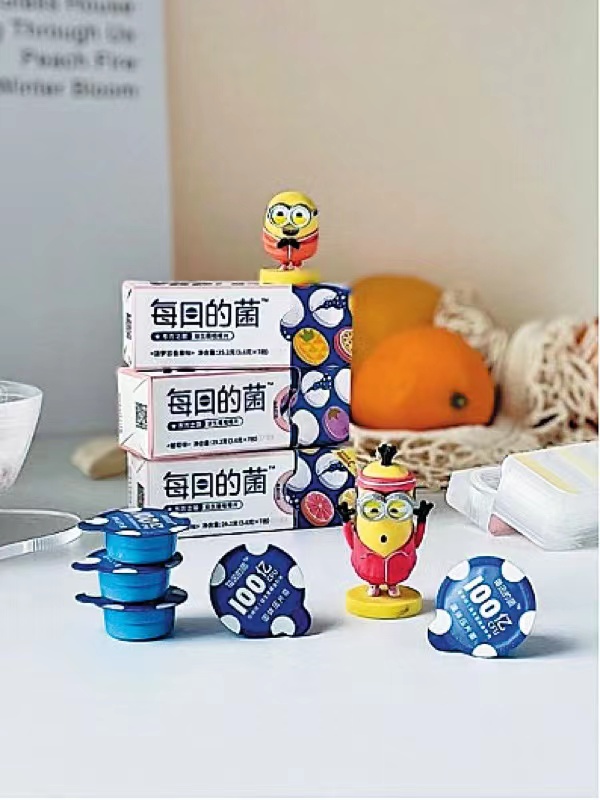
Bio-Everyday.
Yang Rui, the co-founder of Bio-Everyday, said, "We've noticed that Generation Z consumers are paying more attention to their health and that they have high expectations and special requirements for domestic products. As a result, we are offering probiotics (which provide health benefits when taken), especially for Chinese people. We have achieved effective results by doing this."
At first, Bio-Everyday targeted female consumers age 25 to 40 who were concerned about their health. In January, to broaden its consumer base, it introduced a set of probiotics for children and adults, including the elderly.
Last month, Bio-Everyday launched a laboratory jointly with the Wuxi Special Food, Nutrition and Health Institute and Jiangnan University. The lab developed the first beneficial probiotic strain approved for use, targeting solely Chinese consumers. Other probiotics products on the Chinese market are mostly imported and contain strains suitable for the natives of overseas countries.
Yang added that the brand would continue to research and develop strains and raise the technological bar in the domestic healthcare industry to stand out amid growing fierce competition.




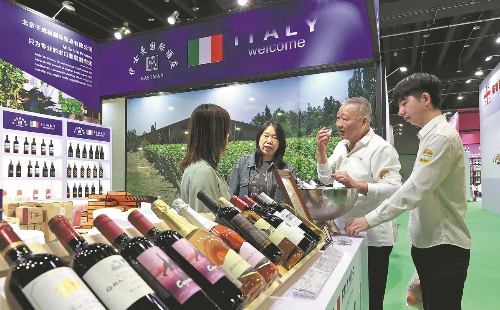
 play
play